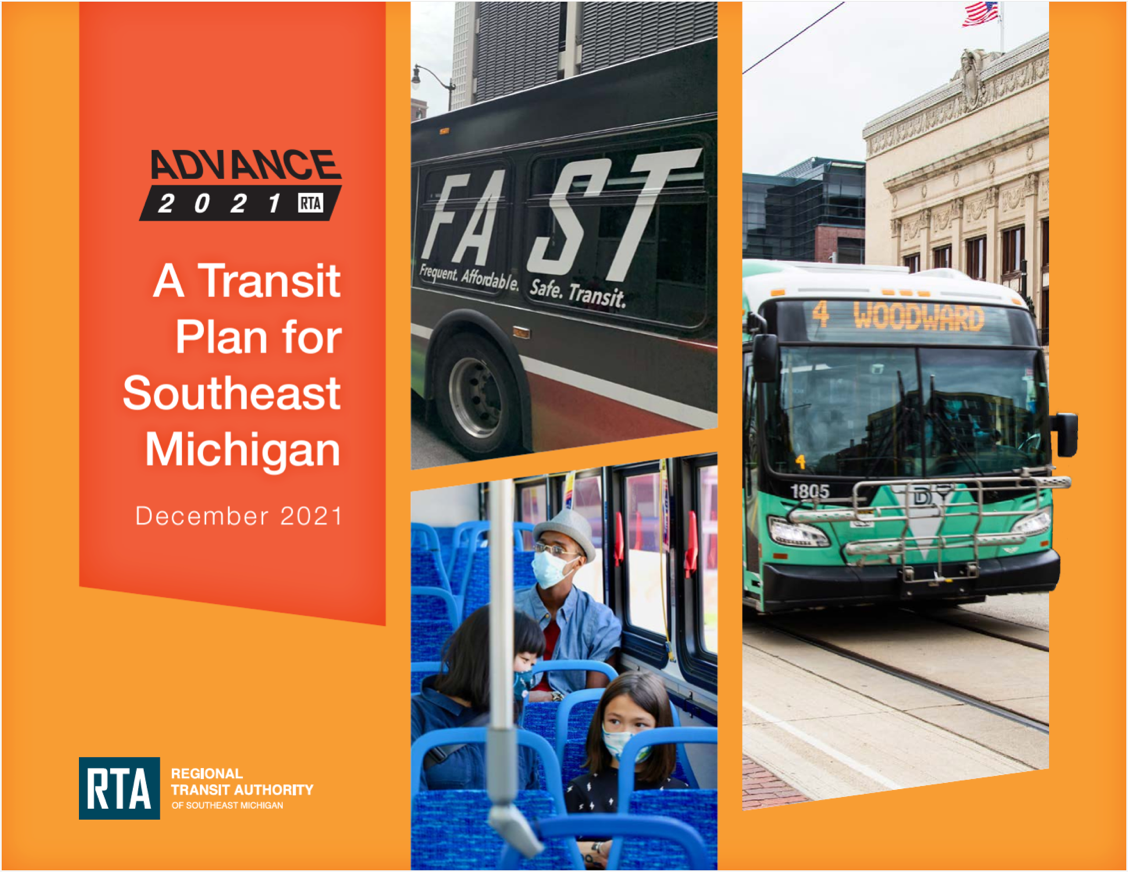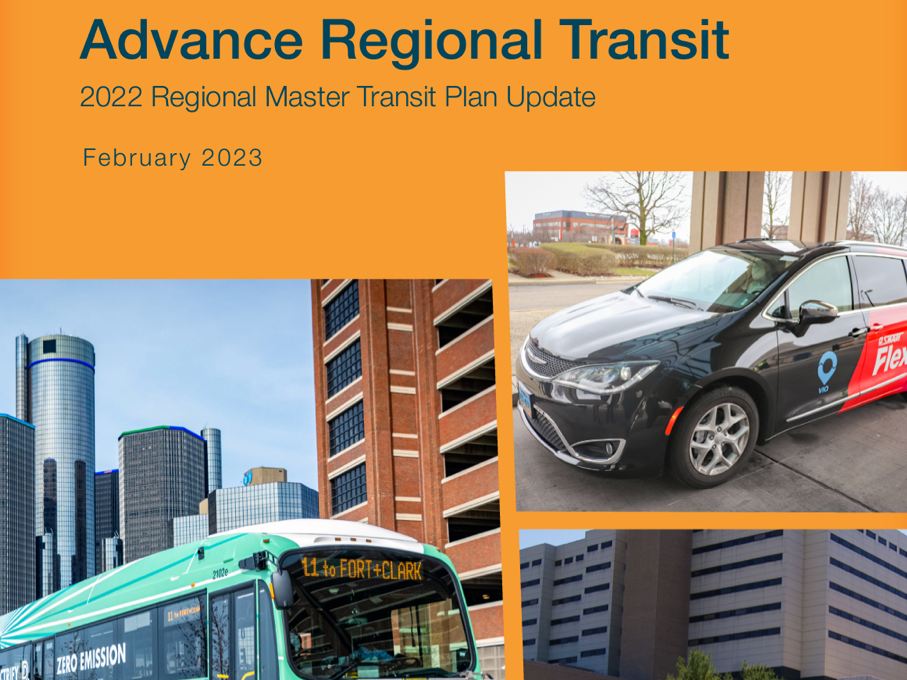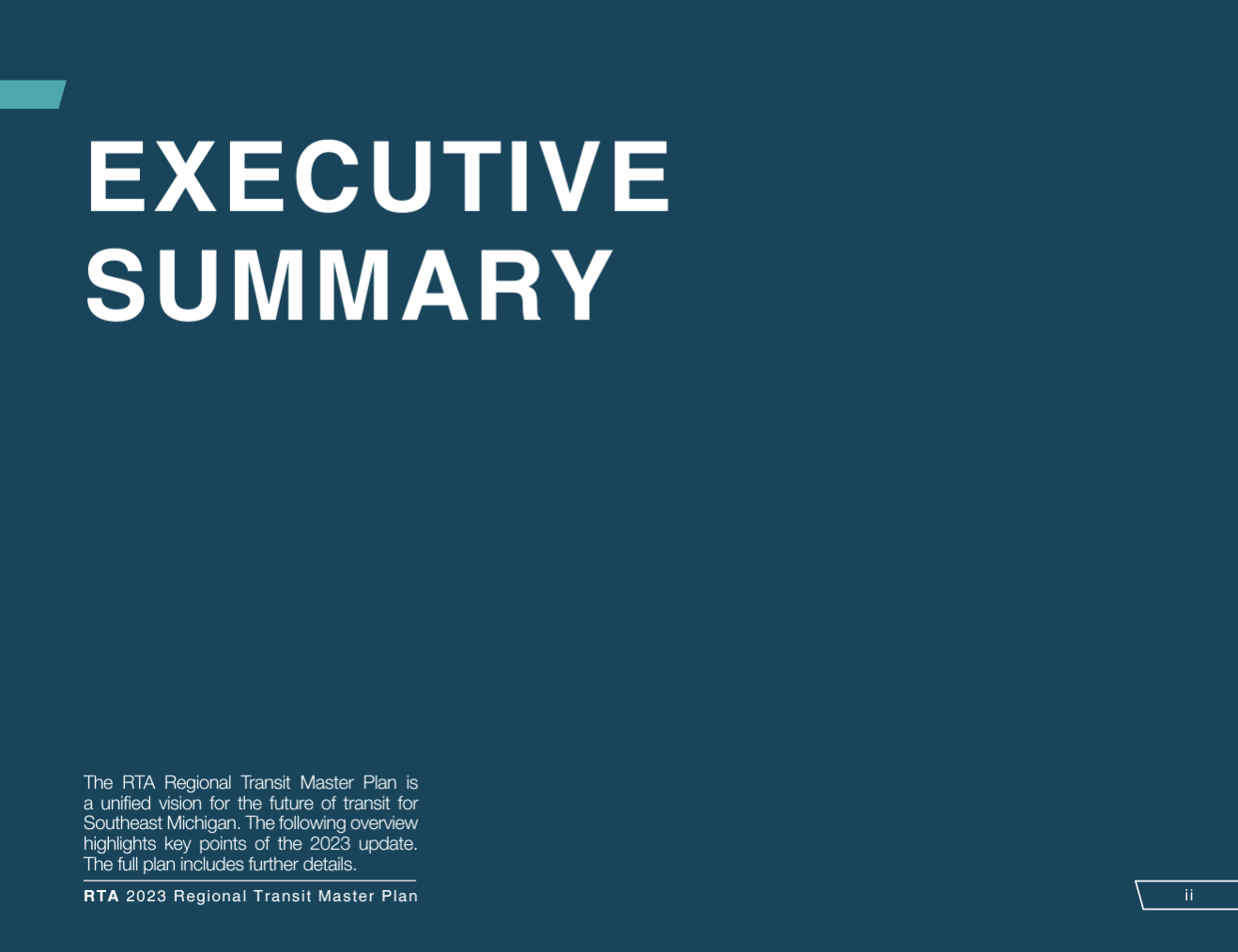نحن نصنع مستقبل النقل
مهمتنا هي ابتكار طرق جديدة وأفضل لنقل الناس وربطهم في جنوب شرق ميشيغان. تُعدّ الخطة الرئيسية للنقل الإقليمي (RTMP) دليلاً أساسياً للهيئة، إذ تُقدّم خارطة طريق واقعية ورؤية موحدة لتطوير النقل في جنوب شرق ميشيغان. تُصدر الهيئة تحديثات سنوية للخطة الرئيسية للنقل الإقليمي (RTMP) لوضع أجندتها الاستراتيجية وتنسيق أنشطة التخطيط بعيدة المدى.

رؤيتنا
نتطلع إلى توفير تمويل كافٍ ومستقر لجنوب شرق ميشيغان لتحسين خيارات النقل العام. سيعزز هذا المساواة من خلال زيادة إمكانية الوصول، وتلبية احتياجات التنقل المتكاملة لمجتمعات جنوب شرق ميشيغان، وتعزيز النمو الملائم للعيش والصحة والاستدامة.
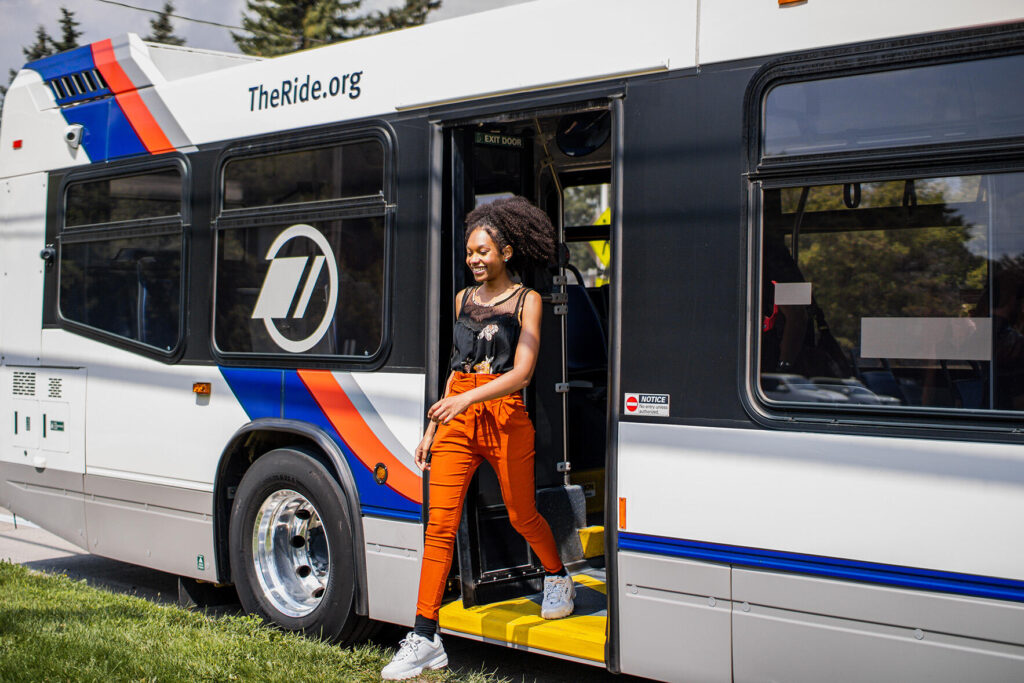
- زيادة التردد والموثوقية وساعات العمل على الخدمات ذات المسار الثابتتطوير شبكة أساسية من خطوط النقل العام بترددات لا تقل عن 15 إلى 30 دقيقة لمدة 18 ساعة يوميًا، وزيادة عدد خطوط الحافلات والقطارات على مدار الساعة. وتطبيق تحسينات تعزز الموثوقية والالتزام بالمواعيد، مثل تخصيص مسارات خاصة، وتخطي طوابير الانتظار، وتبسيط عملية الصعود إلى الحافلات، وأولوية إشارات النقل العام.
- البناء على خدمات الاستجابة للطلب وتنسيقها: تحسين القدرة على التنقل للأشخاص الذين يعتمدون على خدمات النقل العام التي تلبي الطلب والاستجابة من خلال
تقديم خدمات في نفس اليوم، وزيادة ساعات العمل، وتوسيع الأهلية
إلى عدد أكبر من الأشخاص، وتبسيط عمليات النقل بين الخدمات. - تعزيز إمكانية الوصول إلى المجتمعات المحلية والوجهات الإقليميةضمان توفير خدمة نقل مصممة خصيصًا لتلبية الاحتياجات المحلية في جميع مجتمعات جنوب شرق ميشيغان. ويشمل ذلك تلبية الطلب على خدمات النقل العام وخدمات النقل المصغر في المناطق ذات الكثافة السكانية المنخفضة، وتوفير خدمات جديدة أو موسعة على خطوط ثابتة في المناطق ذات الكثافة السكانية العالية، وخدمات النقل السريع التي تخدم وجهات إقليمية رئيسية وتوفر الوصول إلى مناطق أخرى.
- الاستثمار في شبكة النقل السريع وتنفيذها:تخطيط وتصميم وتمويل وتشغيل خدمات النقل السريع على طول الممرات ذات الأهمية الإقليمية التي تدعم التنمية الموجهة نحو التنقل، والعمل مع المجتمعات المحلية لتطوير خطط التنمية الموجهة نحو التنقل التي تشجع النمو الاقتصادي العادل.
- تحسين إمكانية الوصول والراحة والرفاهية في محطات النقل:التأكد من استيفاء محطات النقل لمعايير قانون الأمريكيين ذوي الإعاقة (ADA) وتوفير وسائل راحة وأنظمة أمان لضمان راحة جميع الركاب أثناء انتظار سياراتهم. ويشمل ذلك تحسين الأرصفة ومنحدرات الأرصفة، وتوفير المقاعد والملاجئ والإضاءة واللافتات الإرشادية المباشرة، وتنسيق الحدائق.
- ترقية الاتصالات متعددة الوسائط بين الخدمات:زيادة إمكانية الوصول إلى وسائل النقل العام ومنها من خلال تحسين البنية التحتية للمشاة وراكبي الدراجات في محطات النقل العام وبالقرب منها، وتعزيز تصميمات الشوارع الكاملة، وتحسين خدمات ركن السيارات والركوب، وزيادة توافر خيارات النقل الدقيق ووسائل النقل الصغيرة.
- خدمات تخطيط الرحلات ودفع الأجرة على المستوى الإقليميتطبيق نظام إقليمي متعدد الوسائط لتحصيل الأجرة، يُبسّط الدفع والتحويلات بين الخدمات ووسائل النقل، ويُبسّط سياسات الأجرة بين مُقدّمي الخدمة، مما يُتيح تجربة تنقل سلسة. نشر منصة تخطيط رحلات تُساعد الركاب على تخطيط وجدولة رحلاتهم، وتكون مُتكاملة مع نظام الأجرة الإقليمي.
- تحديث البنية التحتية وصيانتها في حالة جيدةالحفاظ على البنية التحتية للنقل العام، بما في ذلك الحافلات والقطارات، ومرافق الركاب والصيانة، ومركبات الخدمة، في حالة جيدة لضمان استمرارية العمليات وسلامتها. عند استبدال البنية التحتية، يُراعى دمج التقنيات المبتكرة وأفضل الممارسات التي تُحسّن الكفاءة التشغيلية وتخفف الآثار البيئية.
- تحسين جودة الركوب وتعزيز السلامة على متن الطائرة:تعزيز تجربة الراكب من خلال معالجة المخاوف الحقيقية والمتصورة المتعلقة بالسلامة والنظافة من خلال الحملات التسويقية، وتدريب الموظفين، وتطوير التقنيات على متن الطائرة، وبرنامج سفراء النقل الذي يركز على خدمة العملاء، والتواصل المجتمعي، ودعم الراكب، والشعور بالأمان.
- توظيف وتطوير والاحتفاظ بقوة عاملة مزدهرة:إشراك ودعم واستدامة قوة عاملة متنوعة وموهوبة لمواصلة عمليات موثوقة للخدمة الحالية والقدرة على توسيع نطاق الخدمات مستقبلًا. إن ضمان حزم تعويضات ومزايا تنافسية، وتوفير التدريب على التقنيات الحديثة والتقدم الوظيفي، وتحديث ممارسات التوظيف، سيجذب موظفين جددًا ويساعد الموظفين الحاليين على النمو والازدهار.
جنوب شرق ميشيغان في حالة حركة
تعمل هيئة النقل الإقليمية وشركاؤها ومجتمع جنوب شرق ميشيغان معًا لتحقيق الأهداف المحددة في الخطة الرئيسية للنقل الإقليمي. ومن بين الإنجازات الأخيرة ما يلي:
- زيادة توظيف السائقين
- أُطلقت شراكة مع تطبيق النقل العام
- تم تطوير خدمات الحافلات السريعة D2A2 و Detroit Air Xpress (DAX).
- تم إطلاق خدمة الملاحة MyRide2 للرحلات
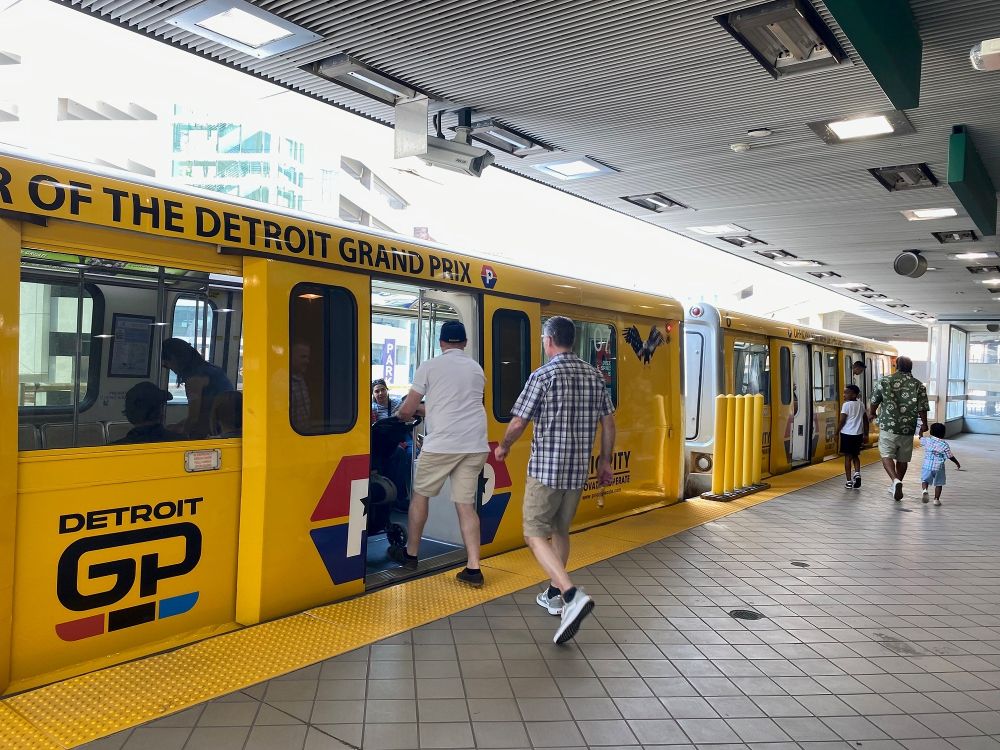
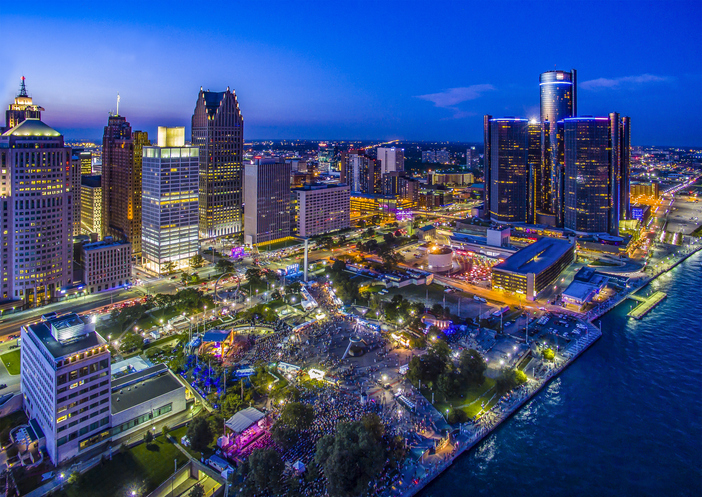
النجاح الاقتصادي
تُهيئ هيئة النقل الإقليمية (RTA) جنوب شرق ميشيغان لتحقيق الازدهار الاقتصادي من خلال تطوير بنية تحتية حيوية للنقل العام. ويعتمد نجاحنا المستقبلي على زيادة التمويل وتنسيق السياسات الإقليمية اليوم. وبفضل التمويل والموارد الإضافية، تستطيع هيئة النقل الإقليمية تحسين الخدمات الحالية، وتوسيع نطاق تغطية النقل العام، وجذب فرص عمل جديدة، وخفض تكاليف المعيشة.
انضم إلينا!
يمكنك مساعدة هيئة الطرق والمواصلات في تحسين النقل الإقليمي من خلال الاشتراك في النشرة الإخبارية Transit Talk، أو متابعتنا على وسائل التواصل الاجتماعي (@rtamichigan)، أو حضور الاجتماعات العامة، أو التقدم بطلب للانضمام اللجنة الاستشارية للمواطنين في هيئة الطرق والمواصلاتوالأهم من ذلك، يمكنك دعم هيئة الطرق والمواصلات من خلال ركوب وسائل النقل العام والتحدث مع أصدقائك وعائلتك وزملائك حول أهمية النقل العام بالنسبة لك وللمنطقة.
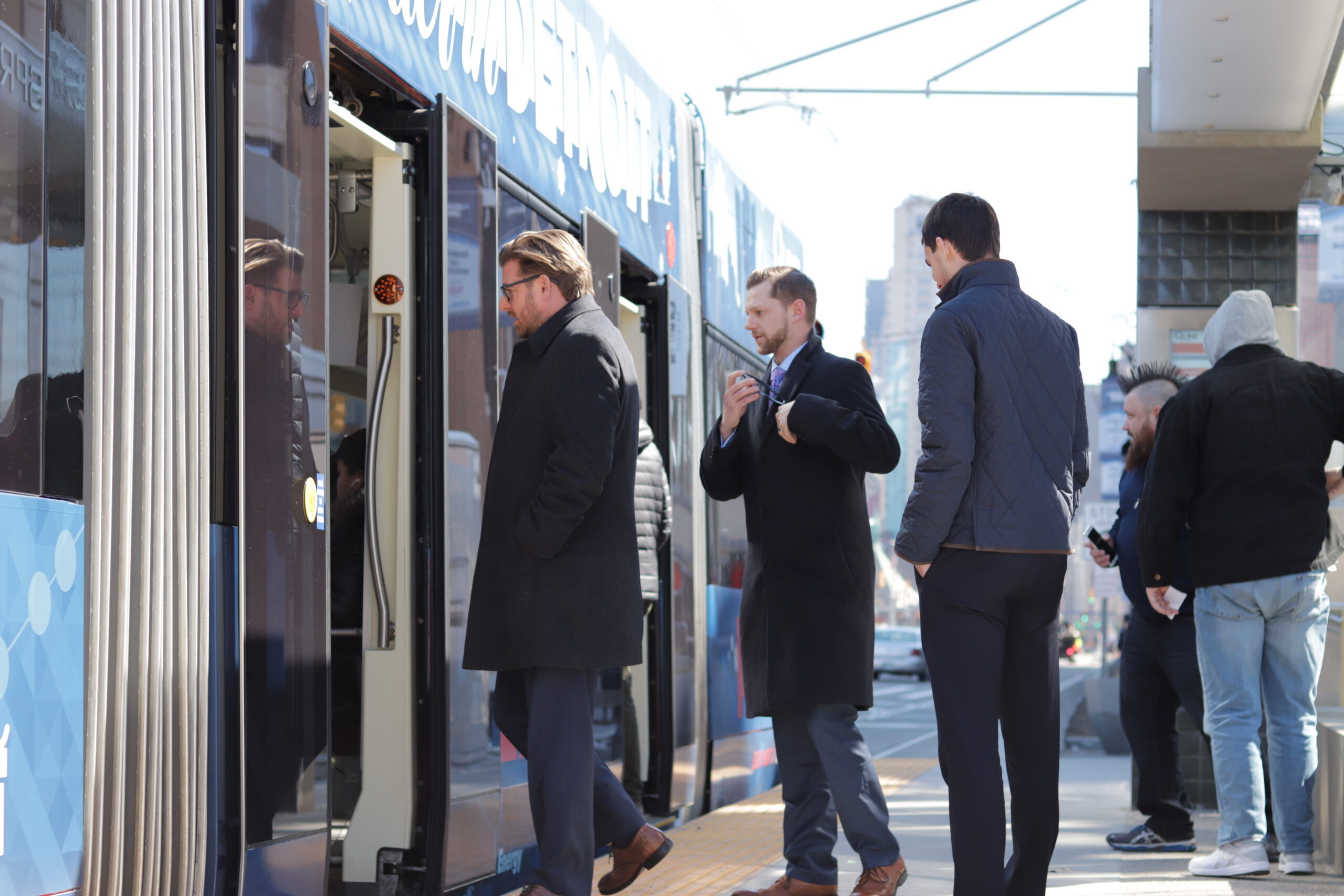

تاريخ RTMP
كانت خطة إدارة النقل البري (RTMP) الأصلية، التي أُقرت في أغسطس 2016، خطةً تمتد لعشرين عامًا باستثماراتٍ مُوصى بها قدرها 4.6 مليار دولار أمريكي. وقد رُفض اقتراح التصويت بفارقٍ ضئيل. وواصلت هيئة الطرق والمواصلات صياغة خطط إدارة النقل البري (RTMPs) بناءً على المُدخلات والاتجاهات المُتطورة. وقد تضمّنت مجموعةٌ من الملاحظات بين مايو وسبتمبر 2021، 4370 شخصًا في لقاءاتٍ مفتوحةٍ افتراضية، وجلسات استماعٍ مُستهدفة، واستطلاعاتٍ عبر الإنترنت. بعد برنامج ADVANCE 2021، أنجزت هيئة الطرق والمواصلات تحليلًا استراتيجيًا لممرات النقل الإقليمية الرئيسية وقدرتها التنافسية لبرنامج منحة الاستثمار الرأسمالي التابع لهيئة الطرق والمواصلات الفيدرالية (FTA) لعام 2022.
في عام ٢٠٢٣، بسّطت هيئة الطرق والمواصلات أهدافها وأعادت تقييم خطة إدارة حركة المرور (RTMP) بعد جائحة كوفيد-١٩. وظلت الأولويات العشر لعام ٢٠٢٣ دون تغيير.




